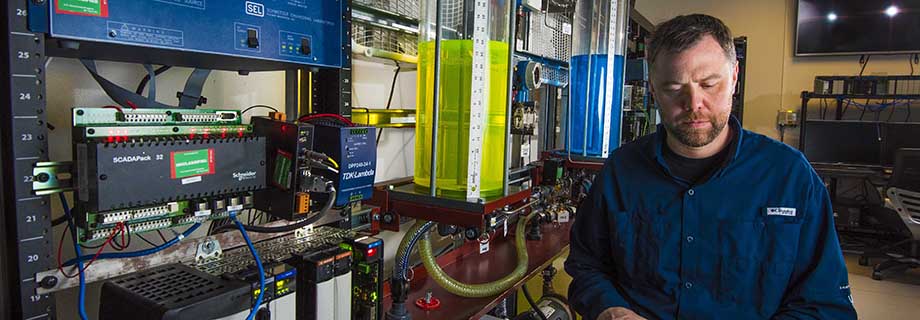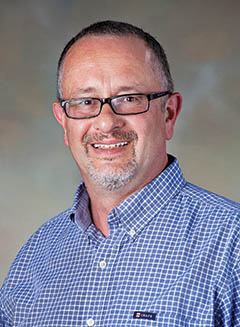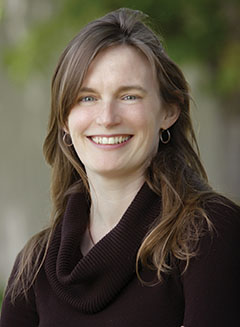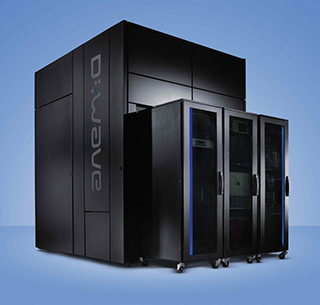
Sandia WeaselBoard technology has been integrated into a land-based version of a Navy ship control system. The WeaselBoard provides an added layer of cybersecurity for the programmable logic controllers that control essential processes on the ship. Testing results showed that the unit properly identifies and alerts on unauthorized configurations. Additional rules are being developed that will help ensure that the programmable logic controller operates only as intended by design. (5600) DSA, Cyber

Pavel Bochev won DOE’s Ernest Orlando Lawrence Award for his pioneering theoretical and practical advances in numerical methods for partial differential equations. Pavel received a medal and a $20,000 honorarium at a ceremony with DOE Secretary Ernest Moniz in Washington, D.C., earlier this year. “This is the most prestigious mid-career honor that the Department of Energy awards,” said Bruce Hendrickson, director of Sandia’s Center for Computing Research. Said Bochev, “I am deeply honored to receive this award, which is a testament to the exceptional research opportunities provided by Sandia and DOE. Since joining Sandia I’ve been very fortunate to interact with an outstanding group of researchers who stimulated and supported my work. These interactions, as well as funding from the ASCR Program of DOE’s Office of Science and the ASC program of the National Nuclear Security Administration, helped shape, grow, and mature the research effort leading to this recognition.”
Sandia has developed unique analytics to support long-term sustainment of Nuclear Security Enterprise capabilities and resources through identifying optimal production plans, capacity constraints, and critical investments required to ensure readiness and stability. These tools have been applied broadly to component production modeling, stockpile evaluation planning and operational modeling, and life-of-program production logistics models. In FY15 the capabilities were used to support the Annual Assessment Report, inform schedule decisions, and analyze the impact of emerging situations such as the Explosives Consolidation Implementation at WETL and operational pauses at Pantex. (6100) NW, NW

Tamara G. Kolda was named a Fellow of the Society for Industrial and Applied Mathematics (SIAM) at the International Congress on Industrial and Applied Mathematics in Beijing, China, an honor reserved for SIAM’s most distinguished members. She is only the 3rd Sandia scientist to be named a SIAM Fellow, and was recognized for “contributions to numerical algorithms and software in multilinear algebra, optimization, and graph analysis.” Tammy’s research interests also include tensor decompositions, data mining, nonlinear solvers, parallel computing, and the design of scientific software.
Sandia’s Lightweight Distributed Metric Service (LDMS) is the first platform-independent monitoring tool providing near-real-time, synchronized, high fidelity, system-wide awareness down to one-second-or-less intervals across tens of thousands of nodes without adverse impact on running applications. LDMS data is unique in scope and fidelity, enabling fundamentally new insights about, and responses to, system and application performance. LDMS is included in the NNSA Tri-lab operating system stack and its deployments include NCSA’s Blue Waters (27,648 nodes) and the Tri-labs. LDMS is a 2015 R&D 100 Award winner. (9300) Cyber
A team led by Peter Maunz (1725) has recently achieved world best fidelity levels (> 99 percent) for a two-qubit gate using trapped ions in devices from Sandia’s MESA facility. Manipulation of the quantum states of individual particles can unlock the potential of quantum computation. These states are exquisitely delicate and the ability to effectively control them is often measured through the fidelity of operations involving these particles. The team is tantalizingly close to the fault-tolerant levels theoretically required for arbitrary computation. (1700) DSA, Cyber

The D-Wave 2X quantum computer natively solves a broad class of discrete-optimization problems leveraging its approximately 1,100 qubits or quantum bits. (Image courtesy of D-Wave Systems Inc.)
Sandia conducted an extensive benchmarking study of one of the world’s first commercial quantum computers, produced by D-Wave Systems Inc. and housed at NASA’s Ames Research Center. D-Wave’s systems employ quantum annealing to solve discrete-optimization problems with potential mission-relevant applications; the current generation offers approximately 1,100 quantum bits. The multidisciplinary Sandia team devised new mathematical techniques to enable benchmarking of more realistic problem instances and identified critical bottlenecks to real-world applications. A technical report detailing the findings has been widely distributed and well received. (1400, 5600) DSA, Cyber